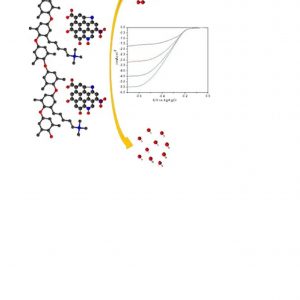Abstract
Composite electrocatalytic electrodes made from B-N co-doped carbon quantum dots (CQD) and various anion exchange ionomers (AEI) are studied for the oxygen reduction reaction (ORR) in alkaline solutions. The quantity and positions of dopants in CQD, prepared by hydrothermal synthesis, are analyzed by various spectroscopies, including 11B NMR spectroscopy that evidenced boronic acid at edge sites. The AEI are synthesized with various backbones, including more hydrophilic polysulfone, hydrophobic poly(alkylene biphenyl), and poly(2,6-dimethyl-1,4-phenylene oxide) with intermediate hydrophilicity; the functional groups are trimethylammonium moieties grafted on long (LC) or short (SC) side chains. The CQD/AEI ink is drop-casted on activated carbon paper, and the samples are fixed on a rotating disk electrode and studied in three-electrode configuration in oxygen-saturated 0.1 M KOH. The onset potentials are among the best in the literature (Eonset ≈ 0.94 V vs RHE). The highest electrocatalytic activity is observed for electrodes containing AEI with long side chains; the sample containing PPO LC attains excellent ORR currents approaching that of benchmark Pt/C cloth. The electrocatalytic performances are discussed in view of the many relevant AEI parameters, including hydrophilicity, oxygen permeability, catalyst dispersivity, and ionic conductivity.
Illustrations
Details
Published on: ACS Applied Materials & Interfaces 2022, 14 (41), 46537–46547
Authors: A.R. Nallayagari, E. Sgreccia, L. Pasquini, M. Sette, P. Knauth, M.L. Di Vona
